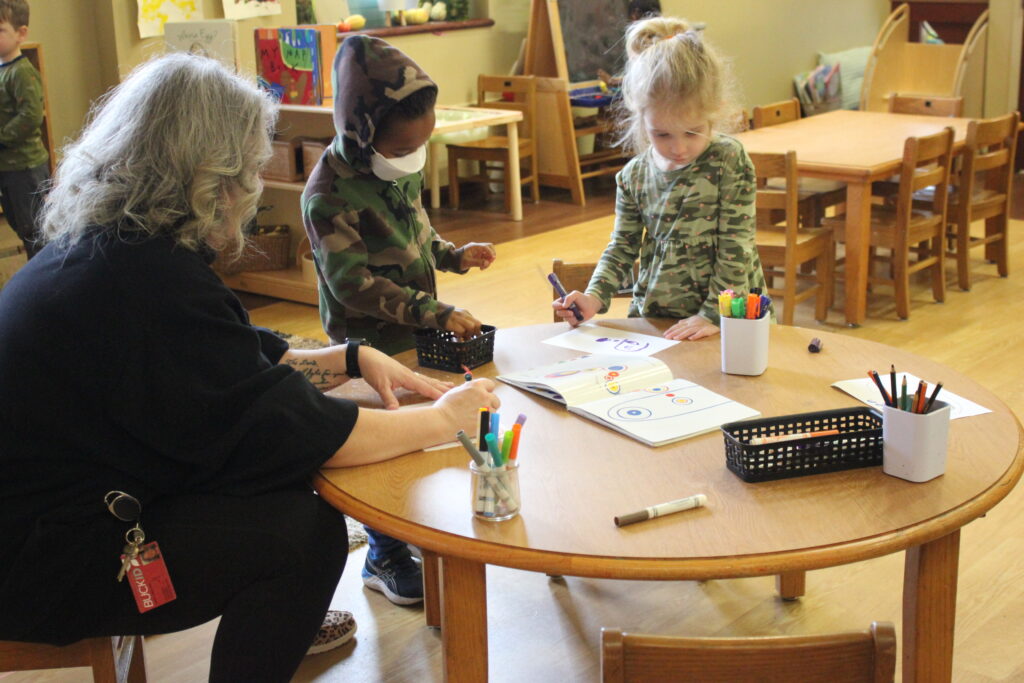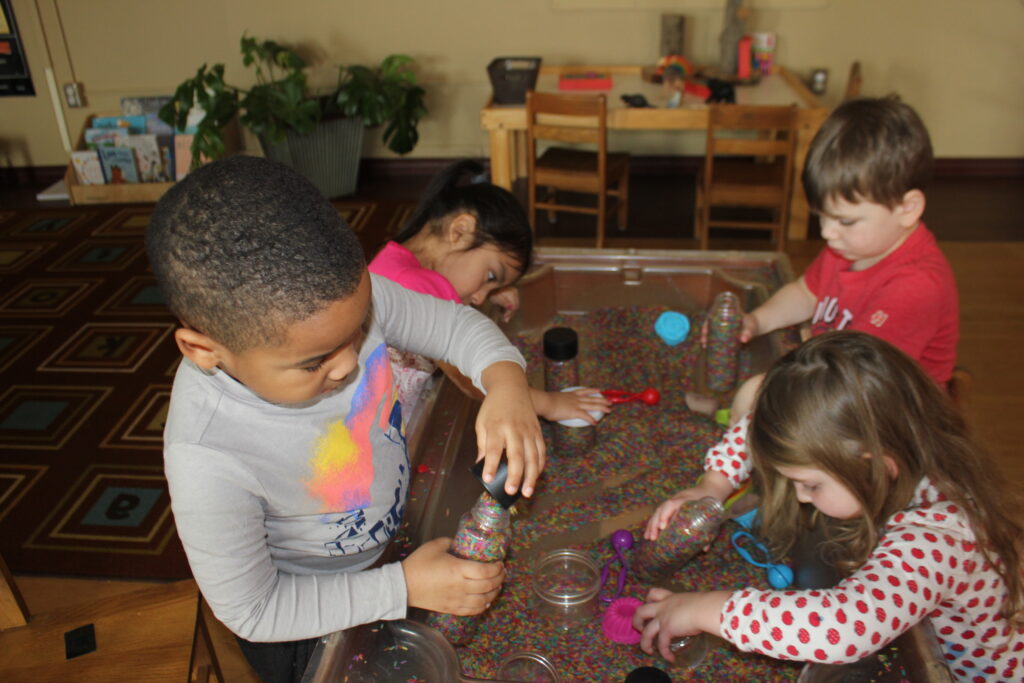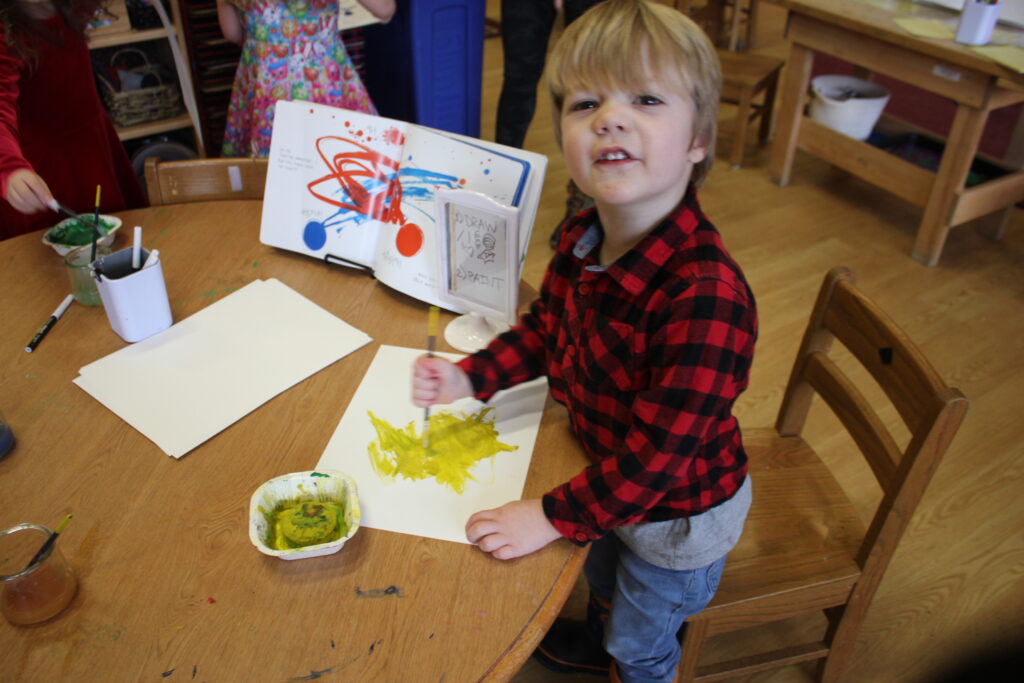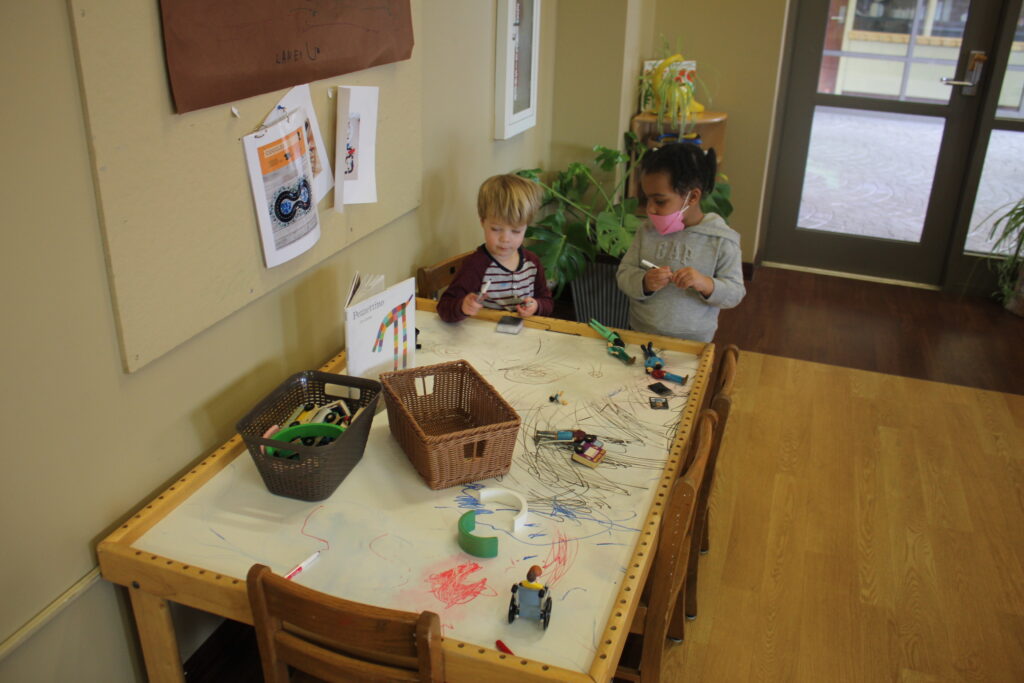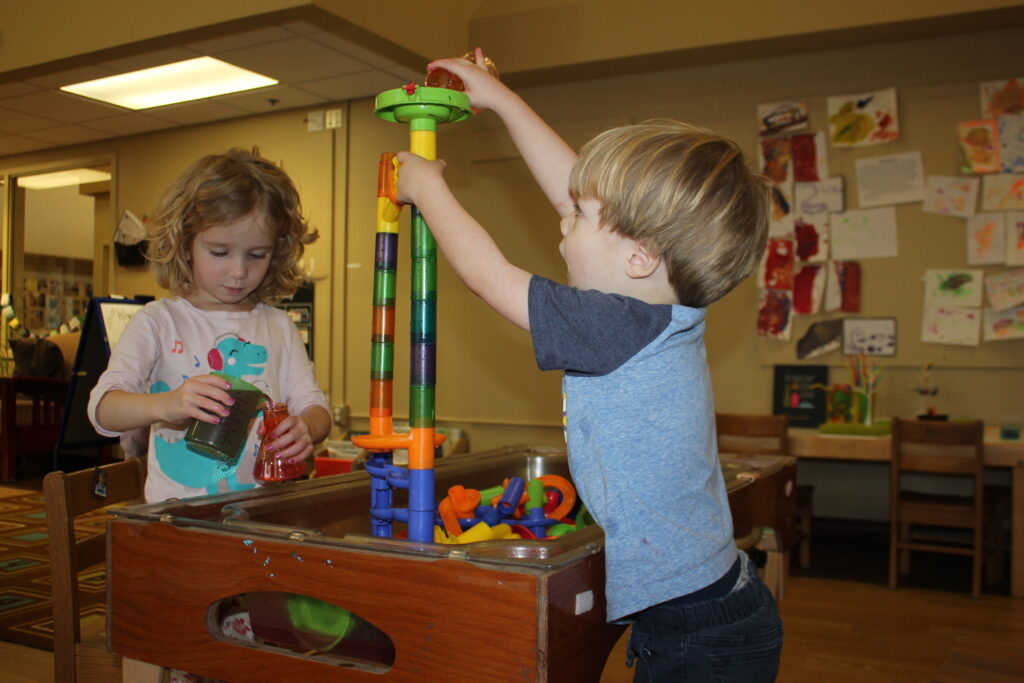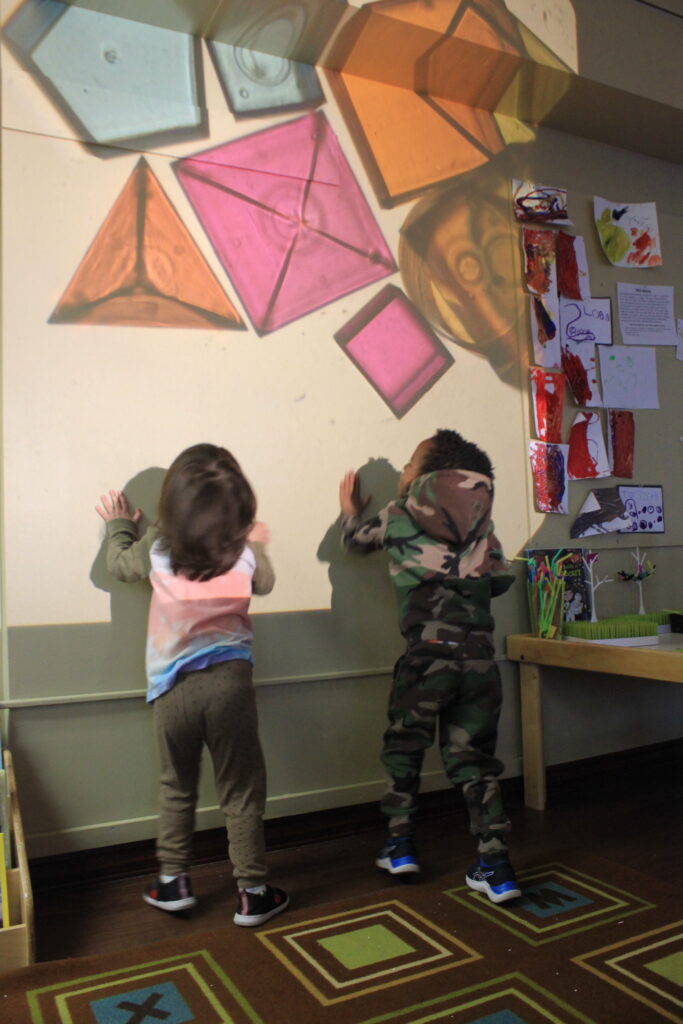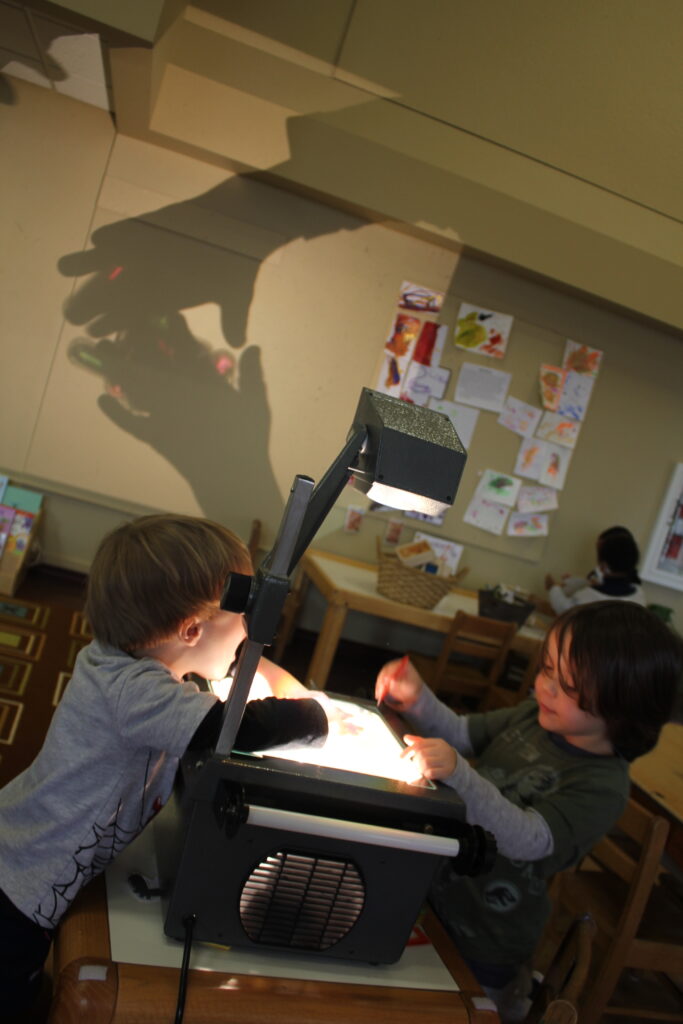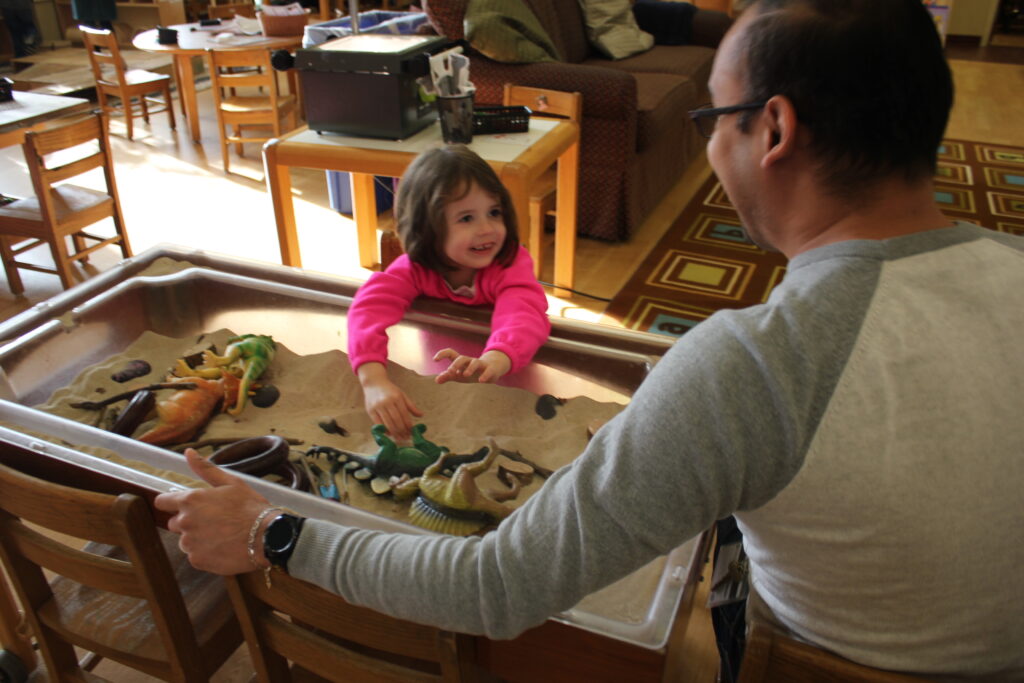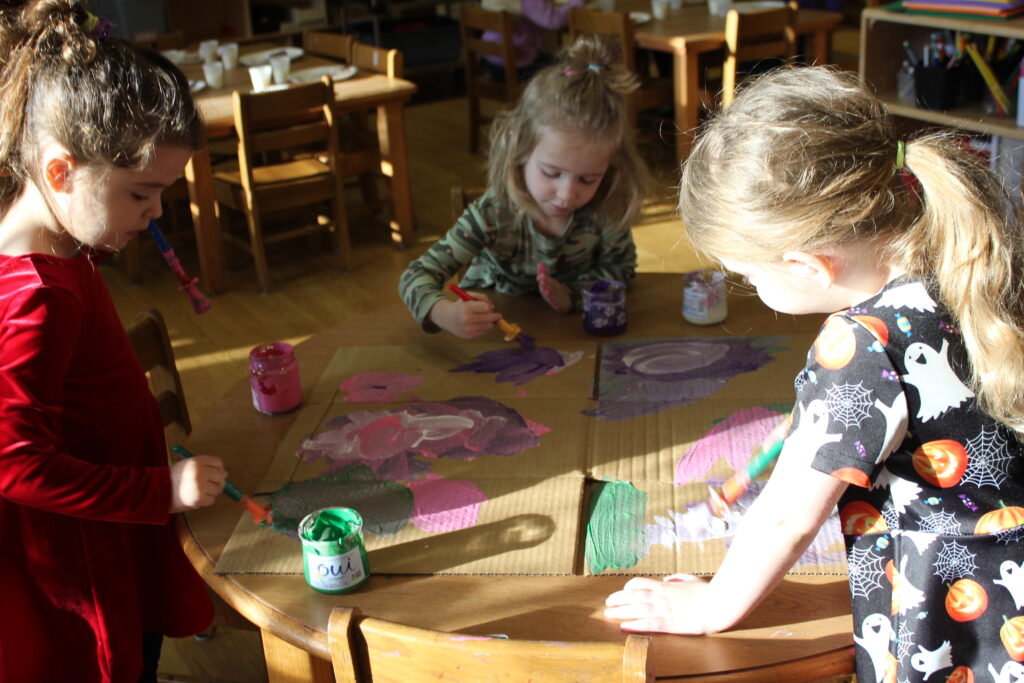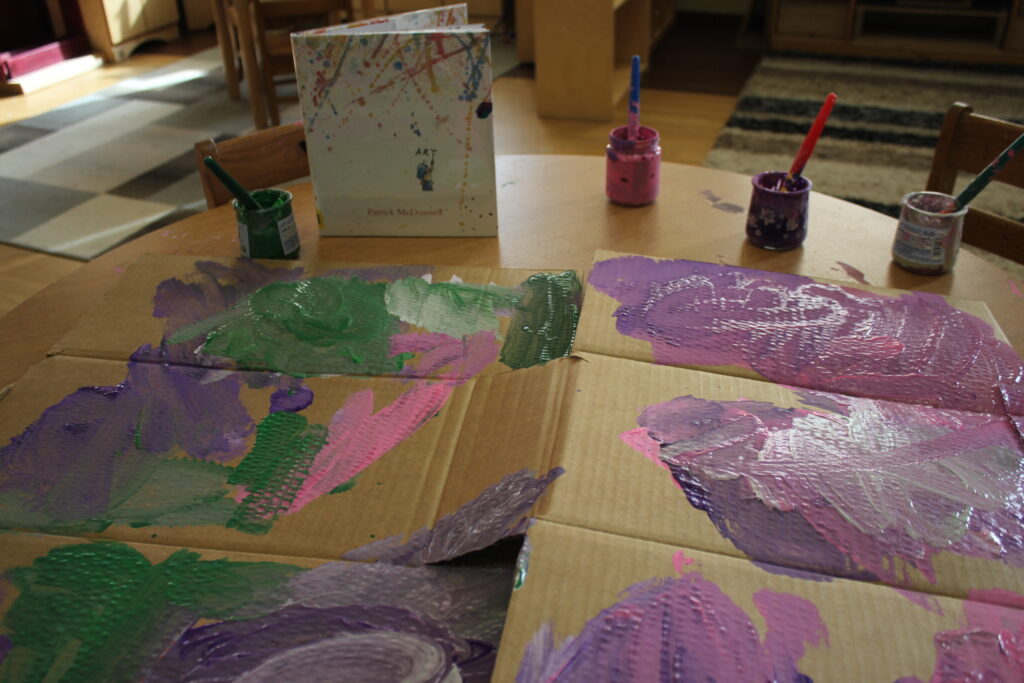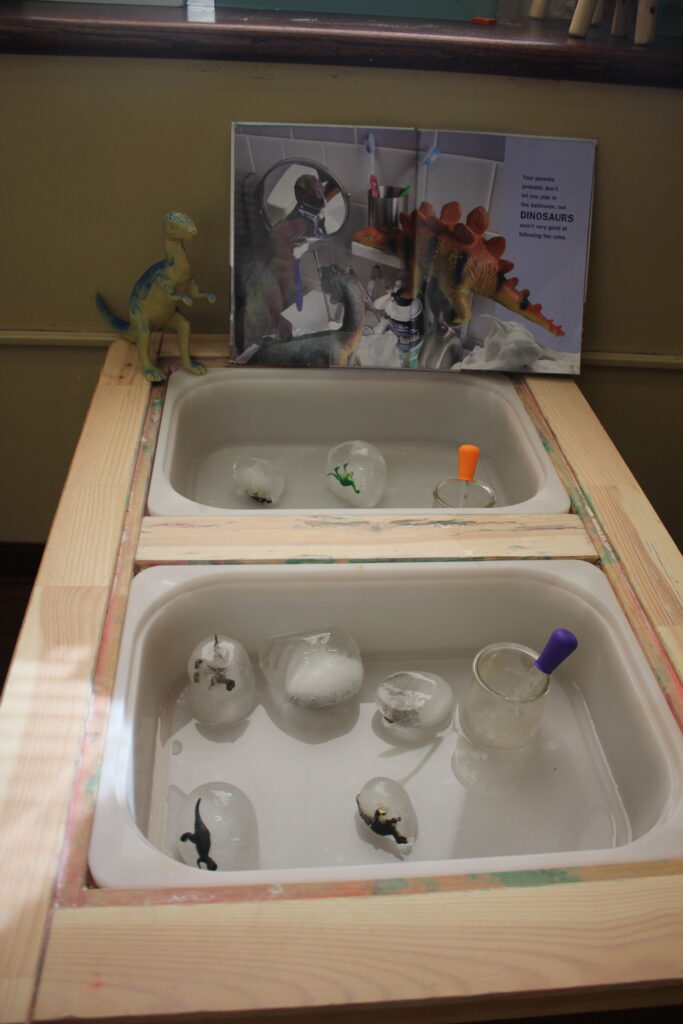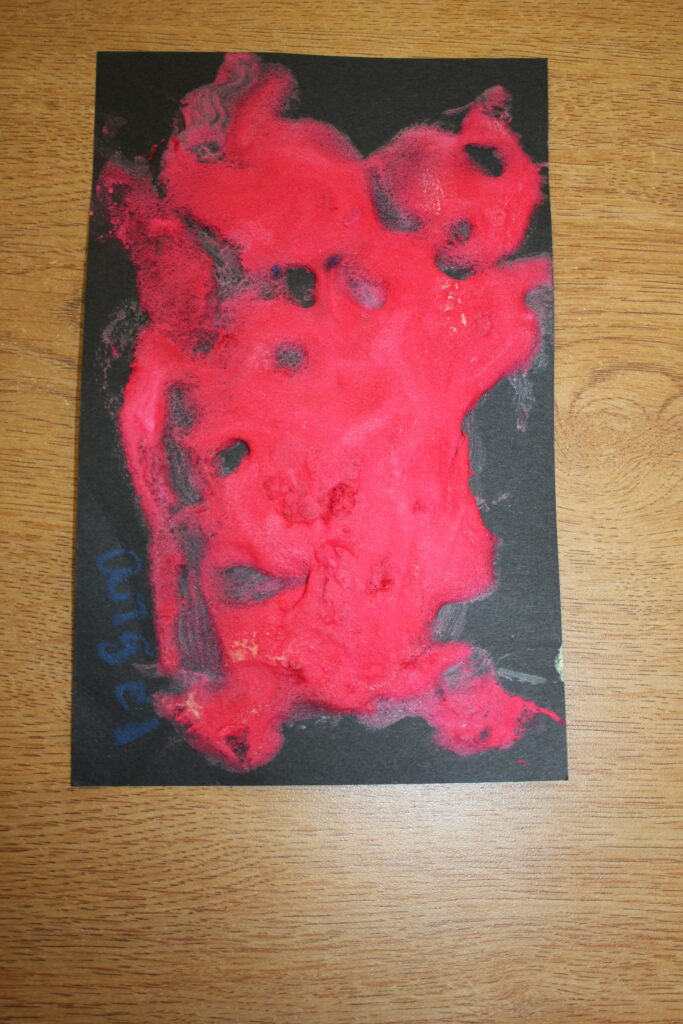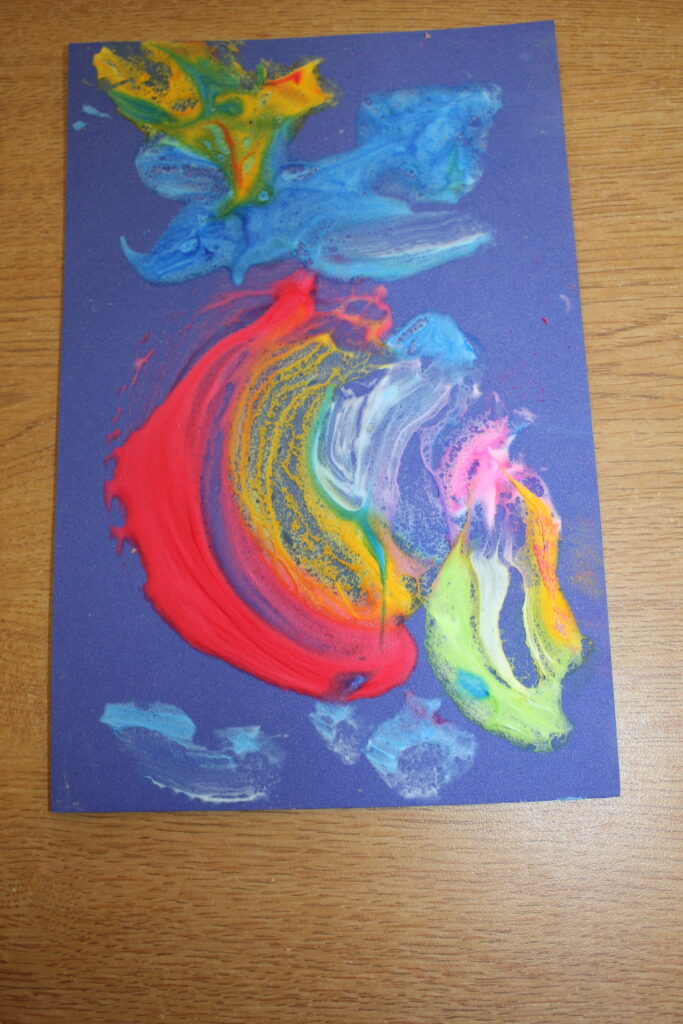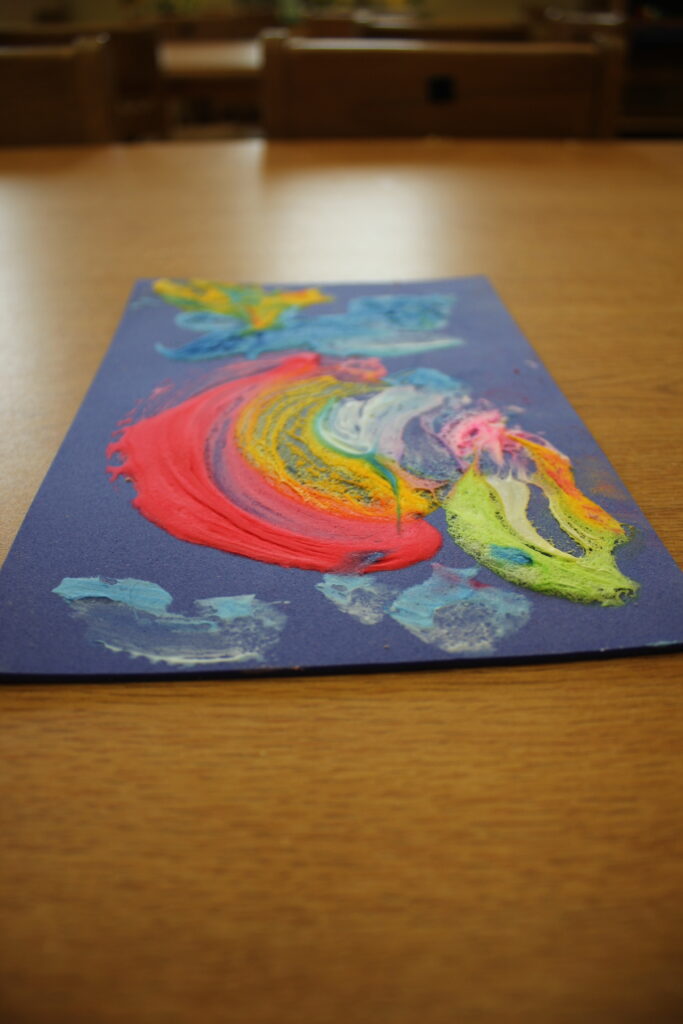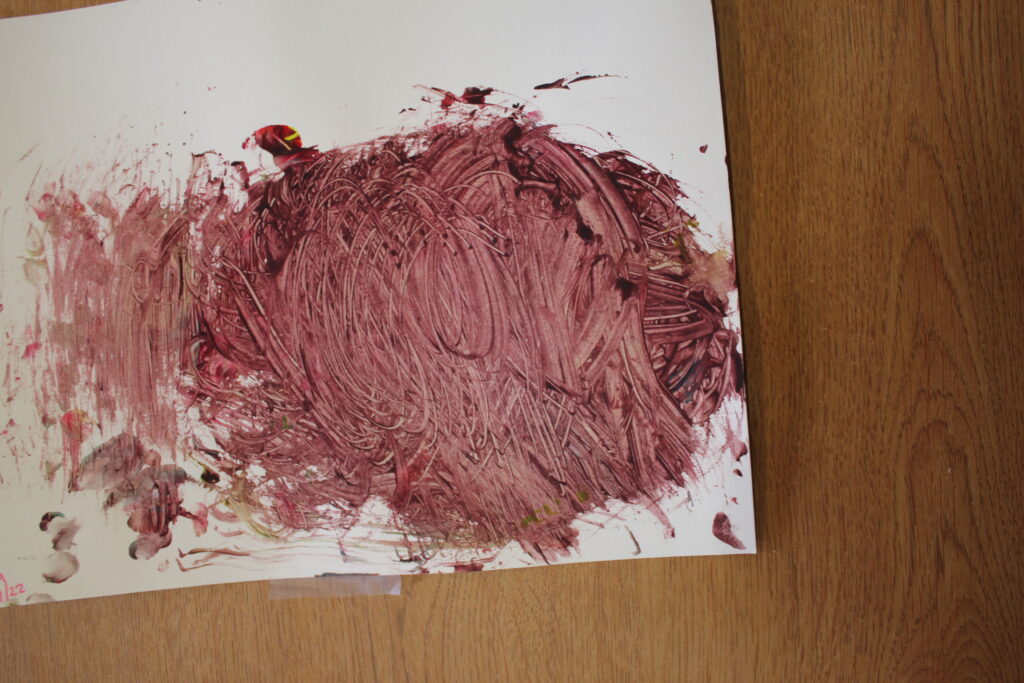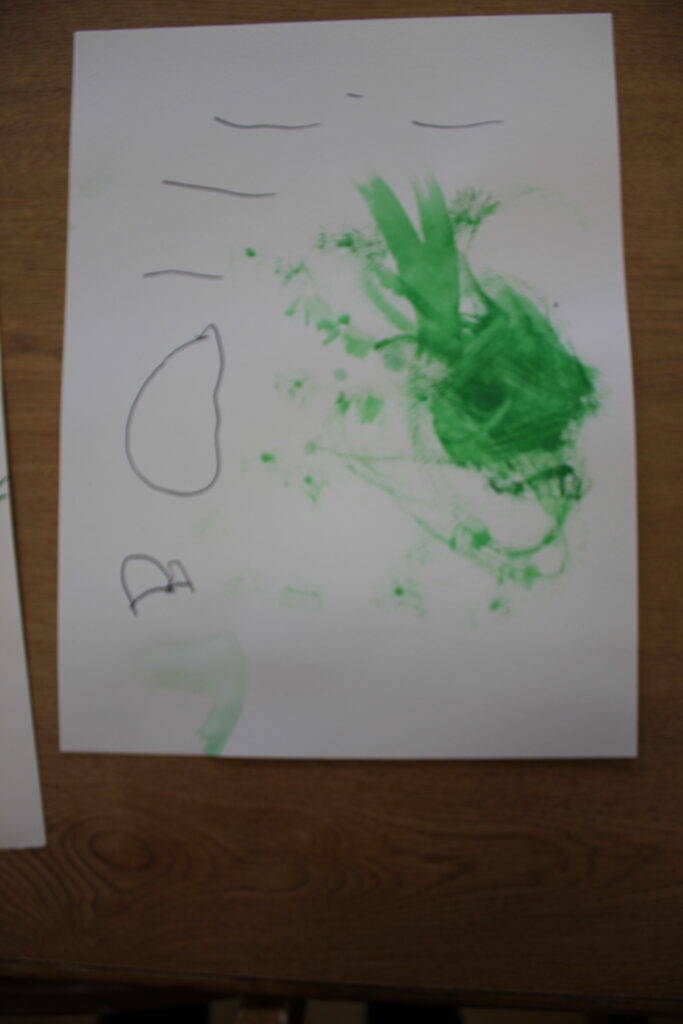
To quote Bev Bos, Early childhood educator and advocate, “If it hasn’t been in the hand and the body, it can’t be in the brain.” The pathway for young children to gain this knowledge in all developmental areas is sensory play. Now some think sensory play as the ooey gooey messy play and that certainly is part of it, but sensory play is anything that includes or invokes our senses. So, let us think of our senses sight, hearing, taste, smell, and touch when these are activated our brain is activated and storing the experience of it all in files; that way when children come back to a similar experience they remember and try and reenact what they know will happen OR they can also build upon a new experience and expand their knowledge base. With sensory play experiences throughout the classroom, teachers ask open-ended questions to build upon vocabulary being used and expand for what children are interested in learning. If teachers are supplying a cause-and-effect experience, they may ask what materials the children are using, how those materials might react together and what could be added or changed to make it better or different. This touches children’s cognitive thinking, approaches to learning, language, and social emotional areas within one experience.
An experience provided to the children was adding black paint to white glue within bottles and asking children to make squiggle and wiggly lines all over their paper. This is engaging their gross motor skills of squeezing continuously with a thick bottle which in turns prepares them for holding a writing instrument. This art invitation lasted over several days because the glue and paint mixture needed to dry before the children came back in with paint on the same piece of paper. By working on something over a period, it gives children time to wonder about what will happen next, as well as delay a need to take home their work immediately and to give time to see what can be added next. With younger preschoolers the sensation of having puddles of glue coming out of a bottle is a first experience and for older preschoolers, teachers see how they know if they move the bottle around, they can make a design or even words using the same materials; again, this goes back to the file of information based on experience.
The more teachers place the same materials into children’s hands the more expansive the outcome. Teachers cannot expect a three-year-old and a five-year-old to have the same outcome, however teachers do know by having them work together that they learn from one another. Teachers also have experienced that children are inspired by books not just by reading them aloud but by exploring the illustrations with easels and opening them in workspaces. By providing a simple invitation with paper, writing or painting tools and an open book, a child naturally begins to doodle to make marks. All writing begins with a scribble, so no mark is unimportant or unintentional; the depth of work varies upon age and stamina of interest which is why teachers move throughout classroom spaces to ask questions, make marks ourselves and scaffold and encourage children on their progress. There is always a story to be told about their work if there is someone available to ask; that someone is also their peers; teachers listen to them engaging with one another and asking questions about what they are creating.
In the classroom there are several opportunities for bins to be filled with water, sand, colored rice, jars, scoops, flowers, droppers, shaving cream, shredded paper, felt balls, tubes and more. The intention behind these ideas is that children will gain the experience and properties of what they are doing through play and as the experiences become more complex or building ideas grow, they know that this object can have a purpose. Mud, water, paint, brushes, hammers, a book or a blanket start with one purpose and hopefully, throughout their lives and their curiosity, the children will do more with those objects and their experiences will have endless possibilities.
